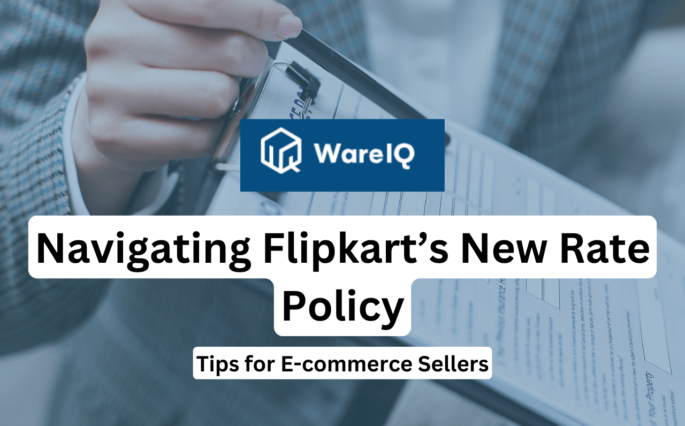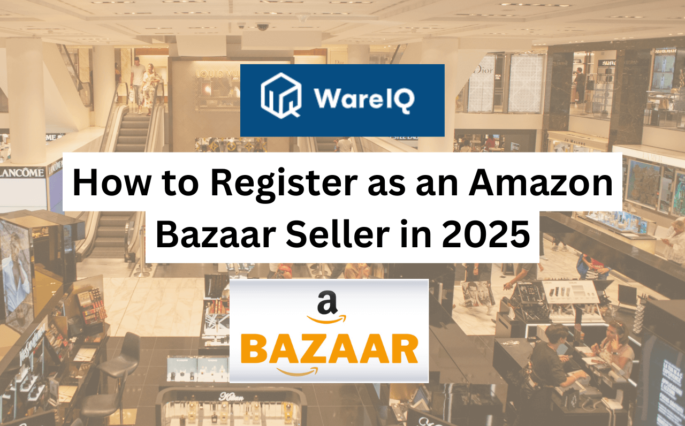Top 10 Logistics Companies in Mumbai [2026] – Growth, Challenges & How to Choose the Right Partner
The logistics sector in India has been expanding and increasing rapidly. Mumbai, also known as Bombay, is a large city located on the west coast of India. It is the capital of the state of Maharashtra and is the most populous city in the country. Mumbai is a center for finance, commerce, entertainment, and culture, and is often referred to as the financial capital of India.In the fiscal year 2021, Statista estimated that the Indian logistics market was worth $250 billion. With a 10–12% compound annual growth rate, this market is expected to reach 380 billion dollars in 2026. India's logistics cost as a percentage of GDP is higher at 14 percent than the BRICS average of 11 percent.eCommerce Logistics companies plan, control, store, and carry out the flow of commodities from the manufacturer to the customer. It is a productive way to move items and their storage from the producer to the client at a reasonable price.Many businesses strive to develop their branches in different areas of Mumbai as the city's commercial sector is expanding rapidly. They are doing so with the assistance of the logistics companies in Mumbai.The top 10 logistics companies in Mumbai are discussed in this article. You can pick a service provider from this list to help you expand your business.List of Top 10 Logistics Companies in Mumbai For Omni-Channel Businesses [Updated 2026]You will require the assistance of eCommerce logistics companies in Mumbai to fulfill services to your clients, regardless of the size of your online store.Based on the size of the logistics companies in Mumbai, the services they offer, and the services they deliver, we have identified that these are the top logistics companies in Mumbai.A list of the 10 best logistics services in Mumbai in 2026 for offline and online brands are mentioned below.1. WareIQFounding Year: 2019Services Offered: eCommerce fulfillment, logistics, shipping, warehousing, same-day delivery, contract logistics, first -mile delivery, last mile delivery, reverse logistics and others.WareIQ is amongst the top logistics companies in Mumbai that B2B, B2C, and D2C brands can employ as a 3PL fulfillment partner. Brands can outsource all logistics-related operations from outsourcing order fulfillment services to inventory management to returns management.Send your products to fulfillment centers near you in India, and WareIQ will streamline your company's logistics and fulfillment operations. It has multiple fulfilment centers in Delhi, Mumbai, Ahmedabad, Chennai, Jaipur, Bangalore and many others PAN India.WareIQ provides same-day and next-day delivery to your consumers using the extensive nationwide distribution network. You can turn down RTO (Return To Origin) orders for your deliveries and reduce your fulfillment costs by up to 40%.How WareIQ facilitates brand expansion through innovative distribution and logistics management?Multiple Fulfilment Centres Which Enhances Logistics OperationsReduced Logistics and Shipping CostsReal-Time AnalyticsSuggested Read: Find the Best Logistics Companies in Ahmedabad in 2026 for eCommerce, D2C, B2B, and B2C Sellers.2. Mahindra Logistics LtdFounding Year: 2000Location: Jogeshwari (East), MumbaiServices Offered: 3PL service provider, Supply chain management, Transport solution facilities, and Mobility ServicesMahindra Logistics was founded in 2000 and had its corporate office in Mumbai. The business provides logistics services to both internal and external clients. Incoming and outgoing logistics, inter-plant transfer, warehousing, and line feed are among its services. Additionally, it offers People Transport Solutions, a business division that provides companies with specialized services for employee transportation to and from work. It is a leading logistics provider in India. A division of the corporation called Mahindra People Transport Solutions guarantees punctual pickups and drops while placing a strong emphasis on security, comfort, and safety.3. Allcargo Logistics LtdFounding Year: 1993Location: Santacruz (East), Mumbai Services Offered: PAN India Container Freight Station, Contract Logistics, eCommerce Logistics, All Freight and ILS, Crane rentalsAllcargo Logistics is one of the top logistics companies in Mumbai. It has established standards for providing our clients with creative, personalized solutions that help cut expenses and save time.Customizing integrated logistics solutions has been made simpler owing to a wide range of sectoral expertise, technology-driven strategy, and assets across India.With our highly skilled personnel, Allcargo Logistics offers services, world-class infrastructure, and reliable safety standards. NVOCC, CFS-ICD, Project and Engineering Solutions, eCommerce Logistics, and Coastal Shipping are just a few of the other services provided by Allcargo Logistics. 4. KK Express Logistics Pvt. Ltd.Founding Year: 2004Location: Andheri West, MumbaiServices Offered: Domestic shipping, international courier, logistics services.In 2004, KK Express Logistics Pvt. Ltd. was founded to provide domestic and international courier & logistics services to corporate businesses and many other commercial organizations in various business disciplines and industries. It's headquarters are in Mumbai, Maharashtra.For the past 18 years, KK Express Logistics has successfully offered domestic and international logistics services in India, Asia & Far East, the Middle East, the United Kingdom, Europe, Africa, the USA, Canada, and Australia & New Zealand.With the assistance of its long-experienced, qualified, compelling, and energetic team of specialists in Domestic & International couriers, cargo, and logistics, KK Express Logistics Pvt. Ltd. has become one of the top logistics companies in Mumbai.5. Celcius Logistics SolutionsFounding Year: 2020Location: Vashi, Navi MumbaiServices Offered: cold storage services, logistics, supply chain management and other logistics solutions.Did you know? Celcius logistics is India's largest ONLINE cold chain network. It was founded in 2020 by Swarup Bose and is headquartered in Mumbai. They deal Logistics And Supply Chain and is one among top logistics companies in Mumbai.The team aims to bring together Transporters and Manufacturers of perishable product for sectors like Dairy, Pharmaceuticals, Fresh Agro produce, Frozen products, and more. Celcius is India's first and only asset light cold chain marketplace with a web and app based SaaS platform that brings the complete cold chain solution network ONLINE.6. Express Global Logistics Founding Year: 1998Location: Sankli StreetServices Offered: Project Logistics, Contract Logistics, E-commerce Logistics, All Freight Forwarding, Third-Party Logistics, and Equipment rentalsAnother substantial logistics support business with a long history in Mumbai is Express Global Logistics, which has developed a solid clientele among the city's business establishments.The firm has excellent planners and specialists who undertake in-depth market research before offering solutions for supply chain management and logistics support. It also provides efficient technological help. They now hold the top spot amongst the leadinglogistics companies in Mumbai because of their outstanding efficiency. They provide services like freight forwarding, equipment rental, and project logistics. They also offer custom clearance services.7. Agility LogisticsFounding Year: 1979Location: Makwana Road, Andheri East, MumbaiServices Offered: Supply Chain Management, E-commerce enablement, Sustainable warehousing, Digital Supply Chain, and Disruptive TechnologiesAgility Logistics has its headquarters in Mumbai, Maharashtra, but was founded in Sulaibiya, Kuwait. High-quality, sustainably designed logistical services have caused them to be on the list of top logistics & warehousing companies in Mumbai. Global multinationals, local and regional leaders, and small and medium-sized businesses benefit from Agility Logistics' strategic, ready access to transportation networks. The industries targeted include commercial real estate and facilities management, fuel logistics, airport services, customs digitalization, remote site services, e-commerce logistics and last-mile deliveries. In addition, supply chain, developing markets logistics index, and trade services are all provided by Agility Logistics.Suggested Read: List of the Best Logistics Companies in Maharashtra8. PrimeTime Logi Services Private LimitedFounding Year: 2019Location: Andheri, MumbaiServices Offered: Freight Forwarding, Custom Clearance, Transportation, DGFT Services and WarehousingPrimeTime was Co-founded by Gaurav Agarwal in 2019. They, PrimeTime Logi Services Private Limited , provide wide range of international freight services to their clients, all of which are supported by a worldwide logistics network, a wealth of knowledge, and ample resources.To meet the demands of today's highly volatile market conditions, PrimeTime Logi offers scalable, customized services. Door-to-door freight forwarding operations to sophisticated supply chain solutions.Experts with vast knowledge and experience in international logistics support their activities. This allows them to efficiently manage shipments by air, sea, and land.PrimeTime Logi Services are amongst the top logistics companies in Mumbai because of its wide range of services and specialized knowledge in delivering a cargo of varying sizes and volumes worldwide to enable just-in-time delivery. 9. Interport Global Logistics Pvt.Founding Year: 2014Location: Choithram Gidwani Rd, MumbaiServices Offered: Freight Forwarding, Logistics Solutions, Transportation & Distribution, Custom Clearance, Project Cargo, Warehousing & warehouse management, Import/ Export Consolidation and Sea/ Air/ Rail FreightInitially, Interport Global Logistics Pvt. I was a small local mover and packer. They are presently one of the top logistics companies in headquartered in Mumbai. Its activities include import/export consolidation, warehousing, project cargo handling, international forwarding, shipping and transport, customs brokerage, and NVOCC.They provide customers with trustworthy, affordable "door-to-door, one-stop" logistics and relocation solutions. All the information pertaining to the shipment and the customer is kept in one place, and Interport guarantees swift customer service and the fastest delivery automation system.10. Blue Dart Express LtdFounding Year: 1983Location: Andheri East, MumbaiServices Offered: Distribution services, Air express, Freight forwarding, Supply chain solutions and Custom ClearanceIndia's Blue Dart Express Ltd. is a 3PL business headquartered in Mumbai, Maharashtra. In 1983, Mr Tushar Jani founded the company. Blue Dart Express serves over 36,000 pin codes in India and over 225 other countries. They provide a selection of service-bundled payment alternatives. These services include time-based/slot-based delivery, automated proof-of-delivery during fulfillment, weather-resistant packaging for orders, cash-on-delivery delivery, and automated proof-of-delivery, which makes blue dart one of the top 3PL logistics companies in Mumbai.Comparison table for the top logistics companies in MumbaiCompany NameFounding YearLocationServices OfferedWareIQ2019Multiple Citiese-Commerce fulfilment, shipping, warehousing, same-day delivery, reverse logisticsMahindra Logistics Ltd2000Jogeshwari (East), Mumbai3PL services, supply chain management, transport solutions, mobility servicesAllcargo Logistics Ltd1993Santacruz (East), MumbaiContainer freight station, contract logistics, eCommerce logisticsKK Express Logistics Pvt. Ltd.2004Andheri West, MumbaiDomestic & international courier, logistics servicesCelcius Logistics Solutions2020Vashi, Navi MumbaiCold storage services, supply chain managementExpress Global Logistics1998Sankli Street, MumbaiProject logistics, contract logistics, e-Commerce logisticsAgility Logistics1979Andheri East, MumbaiSupply chain management, sustainable warehousingPrimeTime Logi Services Pvt. Ltd.2019Andheri, MumbaiFreight forwarding, customs clearance, warehousingInterport Global Logistics Pvt.2014Choithram Gidwani Rd, MumbaiFreight forwarding, logistics solutions, transportationBlue Dart Express Ltd1983Andheri East, MumbaiDistribution services, air express, supply chain solutionsWhat is Logistics in eCommerce?All aspects of the movement of goods between origin locations and consumption along the supply chain are collectively referred to as logistics.For products to be transported to their destination in good condition, the logistics management process depends on having the right resources available at the right time. Therefore, although "eCommerce logistics" and "supply chain" are sometimes mentioned simultaneously, logistics is a critical element of the complete supply chain.Logistics, which includes eCommerce warehousing and transportation, is the general term for transferring goods from Point A to Point B. A network of businesses and organizations must carry out several processes, including logistics, to produce and deliver goods.Essential Considerations for Selecting Logistics Companies in MumbaiChoosing the right logistics company Mumbai is crucial for businesses, especially those in the retail and omni-channel sectors. Here are some key factors to consider:Reliability and ReputationWhen evaluating logistics companies in Mumbai, it's vital to assess their reliability. Look for firms with a proven track record of timely deliveries and positive customer feedback. A strong reputation often indicates quality service and customer satisfaction.Range of Services OfferedDifferent businesses have varying logistics needs. Therefore, it’s essential to choose from the top 10 logistics companies in Mumbai that offer a comprehensive range of services, including transportation, warehousing, and specialised logistics solutions tailored to your industry.Technology IntegrationIn today's digital age, logistics services in Mumbai that use advanced technologies, such as real-time tracking systems and automated processes, can significantly enhance operational efficiency. Companies that leverage technology can provide better visibility and control over shipments.Cost-EffectivenessWhile price shouldn’t be the sole deciding factor, it’s important to compare the costs of different shipping and logistics companies in Mumbai. Ensure that the pricing structure is transparent with no hidden fees, allowing for better budgeting.Growth Dynamics of the Logistics Sector in MumbaiThe logistics sector in Mumbai is witnessing significant growth driven by various factors:E-commerce BoomThe rapid expansion of e-commerce has created a surge in demand for efficient logistics services. Companies are increasingly relying on logistics providers to manage their supply chains effectively, making it essential for them to partner with reliable logistics companies in Mumbai.Infrastructure ImprovementsOngoing investments in infrastructure, including road networks and port facilities, are enhancing the efficiency of logistics operations. These developments are crucial for facilitating smoother transportation and reducing delivery times.Government InitiativesGovernment policies aimed at improving the logistics landscape, such as the National Logistics Policy, are fostering growth. These initiatives focus on reducing logistics costs and improving overall supply chain management.Suggested read: Top Shipping Companies in BelapurKey Influencers of Logistics Operations in MumbaiSeveral factors influence the performance of logistics companies in Mumbai:Market DemandThe increasing demand for faster deliveries from consumers has pushed logistics providers to optimise their operations. This trend is particularly evident among shipping and logistics companies in Mumbai that cater to e-commerce businesses.Competitive LandscapeWith numerous players vying for market share, logistics companies must continuously innovate and improve their service offerings. This competitive environment drives enhancements in efficiency and customer service across the sector.Technological AdvancementsModern technologies, such as AI and IoT, are transforming logistics operations. Companies that embrace these innovations can improve supply chain visibility and responsiveness, making them more attractive partners for businesses.Challenges Confronting Logistics Firms in MumbaiDespite its growth potential, the logistics sector in Mumbai faces several challenges:Traffic CongestionMumbai's notorious traffic congestion can lead to transportation delays. Logistics companies must develop strategies to mitigate these delays and maintain service reliability.Regulatory HurdlesNavigating complex regulations can be challenging for logistics providers. Companies must stay updated on compliance requirements to avoid disruptions in their operations.Infrastructure LimitationsWhile improvements are being made, existing infrastructure still presents challenges. Limited warehousing space and outdated facilities can hinder operational efficiency for many logistics services in Mumbai.By understanding these factors, businesses can make informed decisions when selecting a logistics partner that aligns with their operational needs and growth objectives.Suggested - Top Logistics Companies in PuneHow to Choose the Best Logistics Company in Mumbai?There is no place like Mumbai and choosing the best logistic company in Mumbai can be a challenging task. Here are some factors that you can consider to make an informed decision:Years of Experience: Look for a logistics company that has been in the industry for a while. A company with years of experience would have a good understanding of the challenges that come with transportation and would be equipped to handle any issues that may arise.Company's Reputation: Research the reputation of the logistics company you are considering. Check their reviews online, ask for references, and gather feedback from other businesses that have worked with them.Range of Services: Look for a logistics company that provides a wide range of services, such as transportation, warehousing, packaging, and customs clearance. This will ensure that they can provide end-to-end solutions for your business.Latest Technology: Choose a logistics company that uses the latest technology to manage and track your shipments. This will provide you with real-time visibility and control over your inventory.Cost of Service: Compare the costs of different logistics companies in Mumbai. While you may be tempted to choose the cheapest option, it is important to consider the quality of service provided.Customer Service: Whether offline or online good customer service is the key. Check the customer service of the logistics company. They should be responsive, have clear communication, and be able to provide you with regular updates on your shipment.If you focus on these factors you can easily choose the best logistics company in Mumbai for your business, big or small.ConclusionNow that you know the top logistics companies in Mumbai, you still need to decide which ones you want to work with. Before partnering with a logistics service provider, an eCommerce business must consider several factors, including shipping prices, the size of the distribution network, and order tracking. In addition, this choice might also take into account a lot of industry-specific factors.Also check - Top 10 Logistics Companies in Nagpur for Streamlined OperationsHow WareIQ Improves Logistics Management and Enhances Fulfilment Operations For Companies in Mumbai?Logistics planning is a continuous optimization process that necessitates frequent attention and time. Because of their limited bandwidth, many businesses choose WareIQ as their fulfillment and distribution partner to employ the logistical and inventory planning services and capabilities they demand.With years of experience in shipping and fulfillment services, WareIQ is an Integrated eCommerce fulfillment tech stack to manage and boost logistics. We've established the tools and logistics infrastructure that B2B and B2C brands can rely on to help them organize their logistics and shipping needs. To meet both anticipated and unpredicted issues to make sure that each of our consumers can fulfil the correct order at the right time and cost, making us one of the top logistics companies in Mumbai.WareIQ provides solutions for eCommerce logistics, starting with managing and storing your products. With WareIQ, your business may use a distributed inventory approach to keep their products at one or more of our conveniently positioned fulfillment centers and ship anywhere swiftly and affordably.Key Offerings:Pan-India Fulfillment Network: Over 12 WareIQ-operated fulfillment centers, compliant with Seller Flex & FAssured, providing last-mile delivery across 27,000+ pin codes.Multi-Channel Fulfillment Platform: Seamless plug-and-play integrations with major marketplaces (Amazon, Flipkart, Myntra, Nykaa), D2C platforms (Shopify, Magento, WooCommerce), WMS, and ERPs. Supports fulfillment across distributors, flagship stores, and eCommerce channels, along with advanced analytics.Inventory LogIQ: AI-powered inventory planning to reduce stockouts and automate replenishment across multiple sales channels.Tech-Enabled Returns Management: Quality control solution featuring HD media capture of damaged or missing products to prevent marketplace claim rejections.Seller Enablement & Support: Dedicated account managers, APOB/PPOB registrations, GST registration assistance, COD & NDR verification, and comprehensive seller support.[signup]You Can Also Check: Find Best Logistics Companies in SuratYou can Also Read The List of Top 10 Warehousing and Logistics Companies In Delhi NCR and logistics companies in Bangalore.Logistics Companies in Mumbai: FAQs [Frequently Asked Questions]Why is WareIQ one of the best logistics companies in Mumbai?WareIQ is one of the top logistics companies in Mumbai due to the reason given below-Reduced storage costs – Keep the cash needed to construct the infrastructure. With WareIQ, you can store your goods at fulfillment centers all over India.Client satisfaction – You can ensure on-time delivery and excellent brand reliability with WareIQ’s real-time data and prompt reactions.Reduced delivery time – Fulfilment centers are well-stocked, and merchandise is placed closer to your customers thanks to WareIQ’s intelligent inventory placement, enabling quicker shipment from warehouses and delivery to customers.What services do logistics companies in Mumbai typically offer?Services typically offered by logistics companies in Mumbai include transportation, warehousing, distribution, freight forwarding, customs clearance, and supply chain management. Some companies may also offer specialized services such as temperature-controlled logistics, project cargo management, or reverse logistics.What is the turnaround time for logistics companies in Mumbai?The turnaround time for logistics companies in Mumbai will depend on the services required, the destination of the shipment, and the mode of transportation. It is best to discuss the specific turnaround time with the logistics company before hiring their services. You can know about WareIQ’s by contacting us here.How can I find a reputable logistics company in Mumbai?One way to find a reputable logistics company in Mumbai is to ask for recommendations from other businesses or industry contacts. You can also research companies online, look at customer reviews, and check if they are a member of any professional logistics associations.How much does it cost to use the services of a logistics company in Mumbai?The cost of using a logistics company in Mumbai will vary depending on the services required, the nature of the goods being shipped, and the distance of the shipment. It is best to contact several logistics companies for quotes to compare prices and services. For expert advice and quotes, you can directly contact us.Which are the top logistics companies in Mumbai?Here are the best logistics companies in Mumbai:WareIQ LogisticsDHL supply chainKK Express Logistics
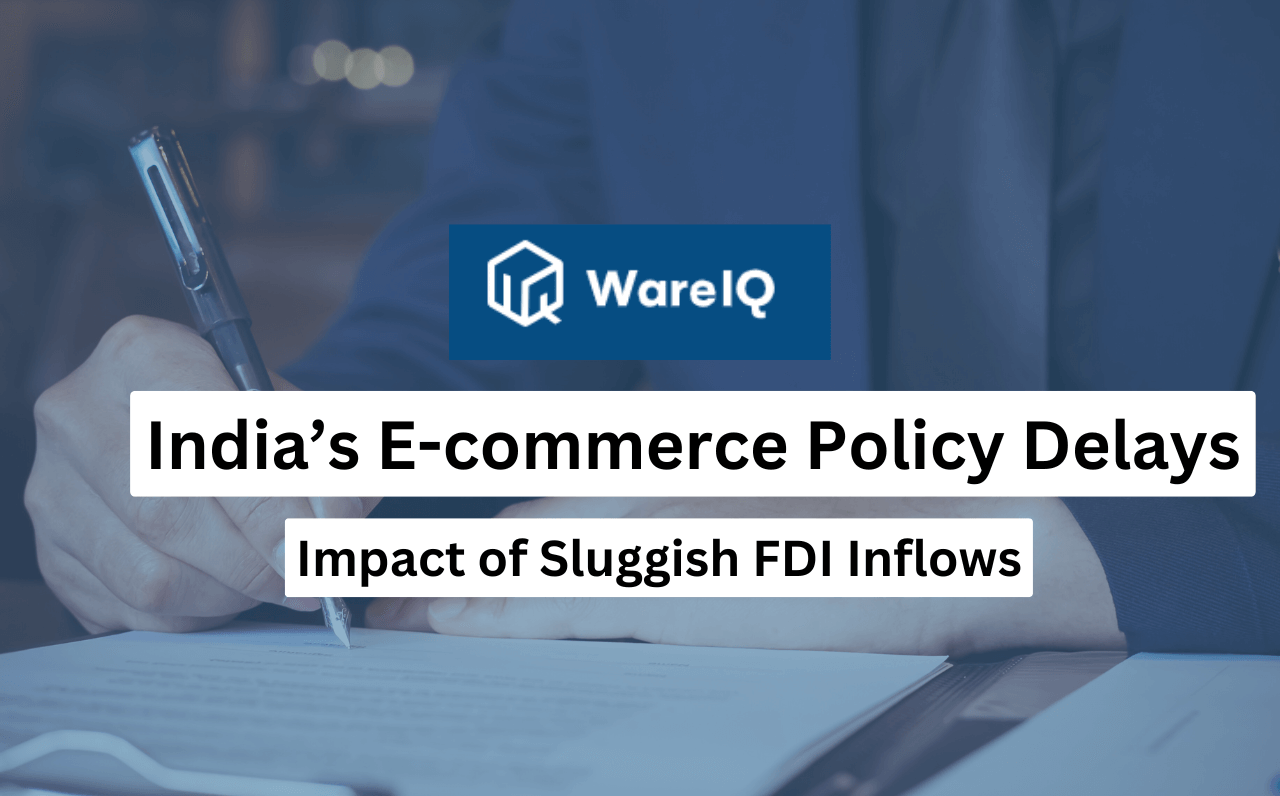
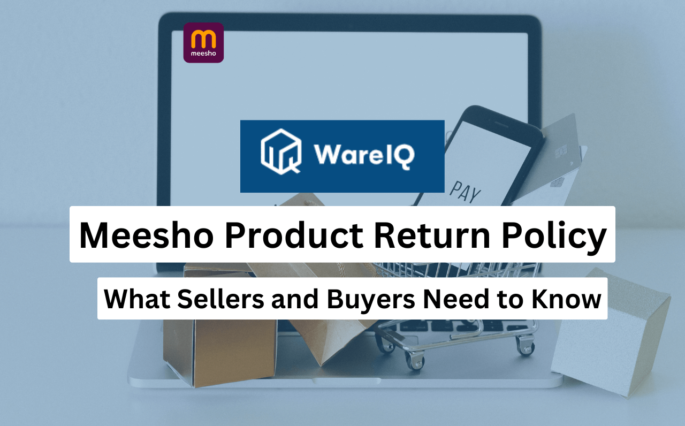
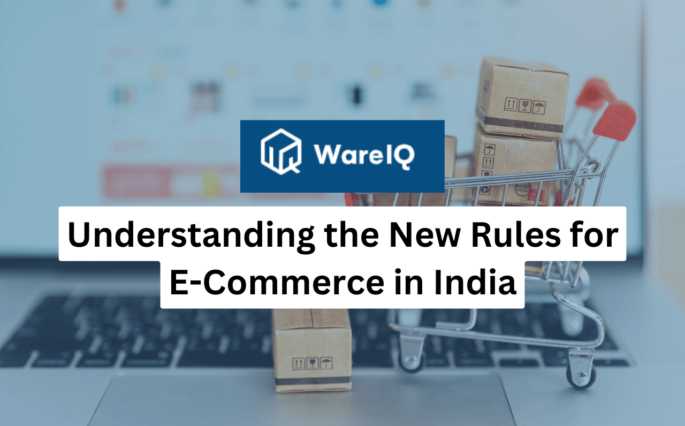
![Top 10 Logistics Companies in Mumbai [2026] – Growth, Challenges & How to Choose the Right Partner](https://wareiq-prelogin.s3.ap-south-1.amazonaws.com/wp-content/uploads/2022/12/02202122/Frame-340-685x293.webp)
![The Impact of FDI Regulations on E-commerce Startups in India [2026]](https://wareiq.com/wp-content/uploads/2025/01/The-Impact-of-FDI-Regulations-on-E-commerce-Startups-in-India-685x426.png)
